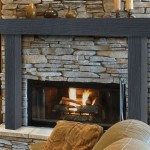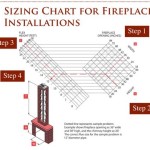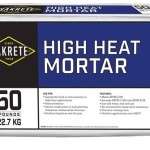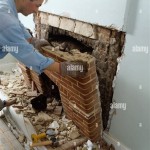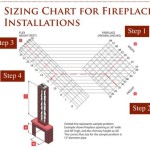How To Build A Patio Fireplace: A Comprehensive Guide
A patio fireplace provides a captivating focal point for outdoor living spaces, extending usability into cooler months and enhancing the ambiance for social gatherings. Building a patio fireplace is a significant undertaking that requires careful planning, meticulous execution, and adherence to local building codes. This article provides a comprehensive guide on constructing a safe, functional, and aesthetically pleasing patio fireplace.
Before commencing any construction, it is crucial to research and understand local building codes and permit requirements. These regulations often dictate specific safety standards, setback distances from property lines, chimney height requirements, and approved materials. Failure to comply with these regulations can result in costly rework or legal penalties. Contacting the local building department is a necessary first step.
The design phase is critical to the success of the project. Considerations include the fireplace's size, style, materials, and location. The fireplace’s scale should be proportionate to the patio area. A fireplace that is too large can overwhelm the space, while one that is too small may lack the desired impact. The design should also complement the existing architectural style of the house and landscaping.
Materials commonly used for patio fireplaces include brick, stone, concrete block, and stucco. Brick and stone offer a classic, timeless aesthetic and are durable materials. Concrete block provides a more affordable option and can be faced with veneer to achieve a desired look. Stucco provides a smooth, modern finish, often applied over a concrete block or brick structure. Selecting high-quality, fire-resistant materials is paramount for safety and longevity.
Planning and Preparation: Laying the Groundwork for Success
The initial phase involves meticulous planning and site preparation. This ensures a solid foundation and a smooth construction process. Key aspects include site selection, foundation construction, and material acquisition.
Site selection is crucial, prioritizing safety and functionality. The fireplace should be positioned away from flammable materials, such as trees, shrubs, and fences. Consider prevailing wind direction to minimize smoke nuisance. Adequate space for seating around the fireplace should also be factored in. Clearance from overhead structures, like power lines, is also critical.
The foundation is the backbone of the fireplace, providing stability and preventing settling. The foundation's size and depth depend on the fireplace's size and the soil conditions. A concrete slab is a common foundation type, typically reinforced with steel rebar. The slab should extend beyond the footprint of the fireplace to provide a stable base and prevent soil erosion. The foundation must be level and properly cured before proceeding with the construction.
Acquiring all necessary materials before beginning construction streamlines the process and prevents delays. This includes the chosen building materials (brick, stone, concrete block, etc.), mortar, firebrick for the firebox, chimney liner, damper, and any decorative elements. Accurate material estimation is essential to avoid shortages or excessive surplus. Ordering slightly more than estimated is recommended to account for cuts and waste.
Construction: Building the Fireplace Structure
The construction phase involves laying the fireplace's foundation, building the firebox, constructing the chimney, and adding finishing touches. This requires precision and attention to detail to ensure structural integrity and aesthetic appeal.
Once the foundation is cured, the construction of the fireplace structure can commence. This typically begins with laying the first course of brick, stone, or concrete block. Mortar should be mixed according to the manufacturer's instructions and applied consistently between each layer. A level and plumb line should be used to ensure that the walls are straight and square. Weep holes should be included at the base of the fireplace to allow water to drain.
The firebox is the heart of the fireplace and must be constructed with fire-resistant materials. Firebrick is the standard material for lining the firebox, providing protection from extreme heat. The firebox should be sized appropriately for efficient combustion and heat radiation. A throat, located above the firebox, helps to funnel smoke into the chimney. A damper, installed above the throat, controls airflow and prevents drafts when the fireplace is not in use.
The chimney provides an exit for smoke and combustion gases. It must be constructed with fire-resistant materials and lined with a chimney liner to prevent deterioration and ensure safe venting. The chimney liner can be made of stainless steel or clay tiles. The chimney's height must comply with local building codes, typically extending at least two feet above the highest point of the roof within a ten-foot radius. A chimney cap prevents rain, snow, and debris from entering the chimney.
After the structure is complete, finishing touches can be added to enhance the fireplace's aesthetic appeal. This includes applying veneer, stucco, or other decorative finishes to the exterior walls. A hearth, extending from the firebox, provides a safe and functional surface for tending the fire. Decorative elements, such as mantels, stone accents, or tile inlays, can be incorporated to personalize the design.
Safety Considerations and Best Practices
Safety is paramount when building and using a patio fireplace. Adhering to safety guidelines and best practices helps prevent accidents and ensures the fireplace's safe and efficient operation.
Using only seasoned firewood minimizes smoke production and ensures efficient combustion. Green or wet wood produces excessive smoke and creosote, which can accumulate in the chimney and increase the risk of a chimney fire. Seasoned firewood should be stored in a dry, well-ventilated area.
Maintaining a safe distance between the fireplace and flammable materials is crucial. Keep furniture, cushions, and other combustible items at least three feet away from the firebox. Never leave a fire unattended, and always extinguish the embers completely before leaving the area. Have a fire extinguisher or a water hose readily available in case of emergencies.
Regular chimney inspections and cleaning are essential for preventing chimney fires. Creosote, a flammable byproduct of wood combustion, can accumulate in the chimney and ignite. A professional chimney sweep should inspect and clean the chimney at least once a year, or more frequently if the fireplace is used regularly. Clearing any debris or obstructions from the chimney ensures proper ventilation.
A patio fireplace offers a valuable addition to an outdoor living space, providing warmth, ambiance, and a focal point for social gatherings. By following these guidelines and prioritizing safety, a homeowner can construct a patio fireplace that enhances their outdoor experience for years to come. The careful planning, meticulous construction, and adherence to safety precautions will lead to a successful and enjoyable project.

How To Build An Outdoor Fireplace Firefarm Living

How To Build An Outdoor Stacked Stone Fireplace

How We Built Our Outdoor Fireplace Chris Loves Julia

How Much Does It Cost To Build A Diy Outdoor Fireplace

How We Built Our Outdoor Fireplace Chris Loves Julia

Stonetutorials Living Stone Masonry

Outdoor Fireplace With Bench Seating W Tips From A Professional Mason

Saguaro Diy Outdoor Fireplace Plan

Diy Outdoor Fireplace Ideas

Build An Outdoor Fireplace The Shed

